I found a shared reason. Whether you are kicking down when you don't want to, the board goes higher than your front foot, doing a Rocket Flip, the board shoots out forward, or you end up catching the board upside-down, it is all because you are lifting your front knee too high. Everything can be explained by this. In this article, I'll scientifically break down why it's hard to fix the knee, what happens when it does, and how to fix it.
Summary
The front foot drops when you lift it too high
Generally, to lift the back foot, your upper body lowers and generates a force to do so, because any object needs a "Counter Force" to move in the air. If you lift your front foot too high, you can't lower your upper body leaving you no option than lowering your front foot to raise your back foot.
Avoid the Over Pop
Popping too hard makes it hard to flick your front foot off the board, as it increases friction between them. It may also cause your board to rise higher than your front foot. As it is hard to pop intentionally weaker, try different foot placements.
Forget the idea of "Flicking Upward"
The board needs a downward force to flip. An upward force that applies parallel to the board NEVER flips the board. Don't be afraid to flick down. As long as your knee rises with your body, your front foot moves upward even if you flick downward.
Why does the front knee drop?
Try it yourself: Jump on the ground while pulling up your front foot as high as possible, then lift your back foot just as you would in a Kickflip. By doing so, the front foot would naturally go down. Simply put, this is the reason. In order to understand what's happening here, we need to go back in the timeline and examine your posture as you crouch. Are you not facing completely sideways when you crouch? That's perfectly understandable because you would do so when jumping on the ground, and when standing on the board, it should feel more stable, as you can see both feet. However, that posture may be the source of the problem.
In the previous video about Ollie, I used an example of a seesaw to explain that you have to push down on the floor with both feet to lift your center of mass. In Kickflips, too, you do have to lift your body weight. While facing sideways itself is not evil, it just makes it easier to focus too much on popping. As a result, your back foot pushes down on the tail too hard, and, in reaction, your front foot and center of mass lift upward higher than necessary.
If the front knee stops at the proper height, you can lift your back foot by lowering your upper body and arms, as if you were compressing your whole body. This is because, if you want to move a part of your body in the air, you have to move the other side in the opposite direction.
However, if you raise your front knee too high, it begins to push your upper body upward. The problem is that, now that the upper body is moving up, you can't lower it. And in order to generate force to lift your back foot, the only way left for you — that's right, is to lower your front foot.
You get it? Again, to raise a part of your body in the air, you have to lower another part, which, in general, is your upper body. But if it's going up by lifting your front knee too high, to raise your back foot, your front foot has to play that role by going down. In other words, the reason you wind up flicking down is because you are lifting that knee too high. What an irony. But don't worry — there's a scientific way to solve this problem.
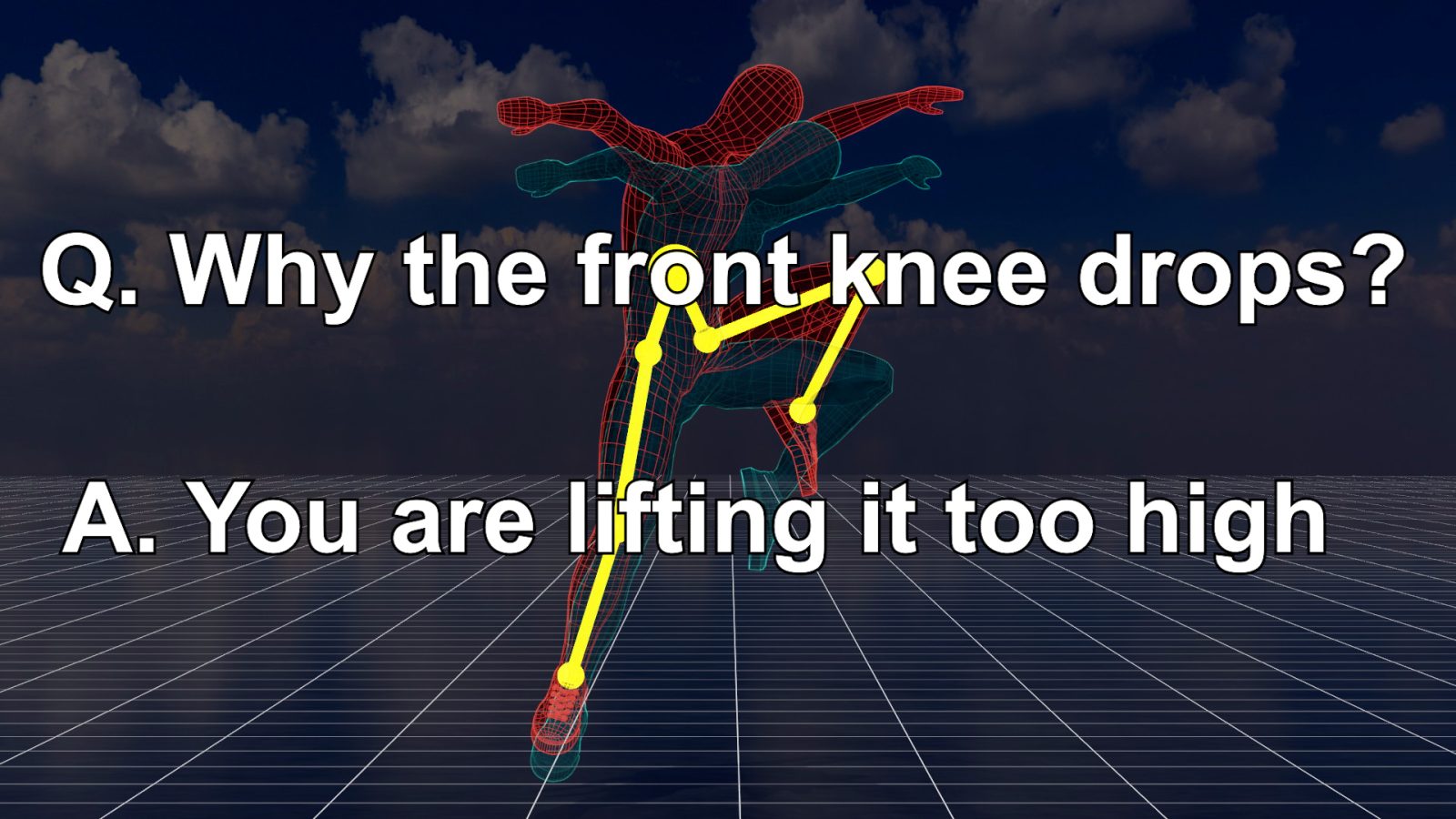
The downside of lifting the front knee too high
Before discussing how to solve this problem, though, let's first review what happens when the front knee rises too high. The most common problem — as just mentioned — is that the front foot touches the ground before the board.
The board rises higher than your front foot when you flick. This is because your front foot lifts the board with it while giving it too much energy to rise.
You end up doing a Rocket Flip because the board's angle increases too much by raising the front knee.
From this state, if you push your front foot through the board too forcefully, the board shoots out forward.
You may also catch the board upside-down. As the front knee drops from the highest point, your front foot drags the nose down, raising the tail unnecessarily high.
How to fix the height of your knee in one place
If you are having a hard time, forget the idea of lifting your body weight on both feet and try something radically new. Shift your weight onto the front leg and raise your body straight up, extending it. Pushing down only on the back foot does not necessarily lift your body weight, as you may end up just increasing the board's angle. But in this way, the force of the front leg directly lifts your body weight without going anywhere else.
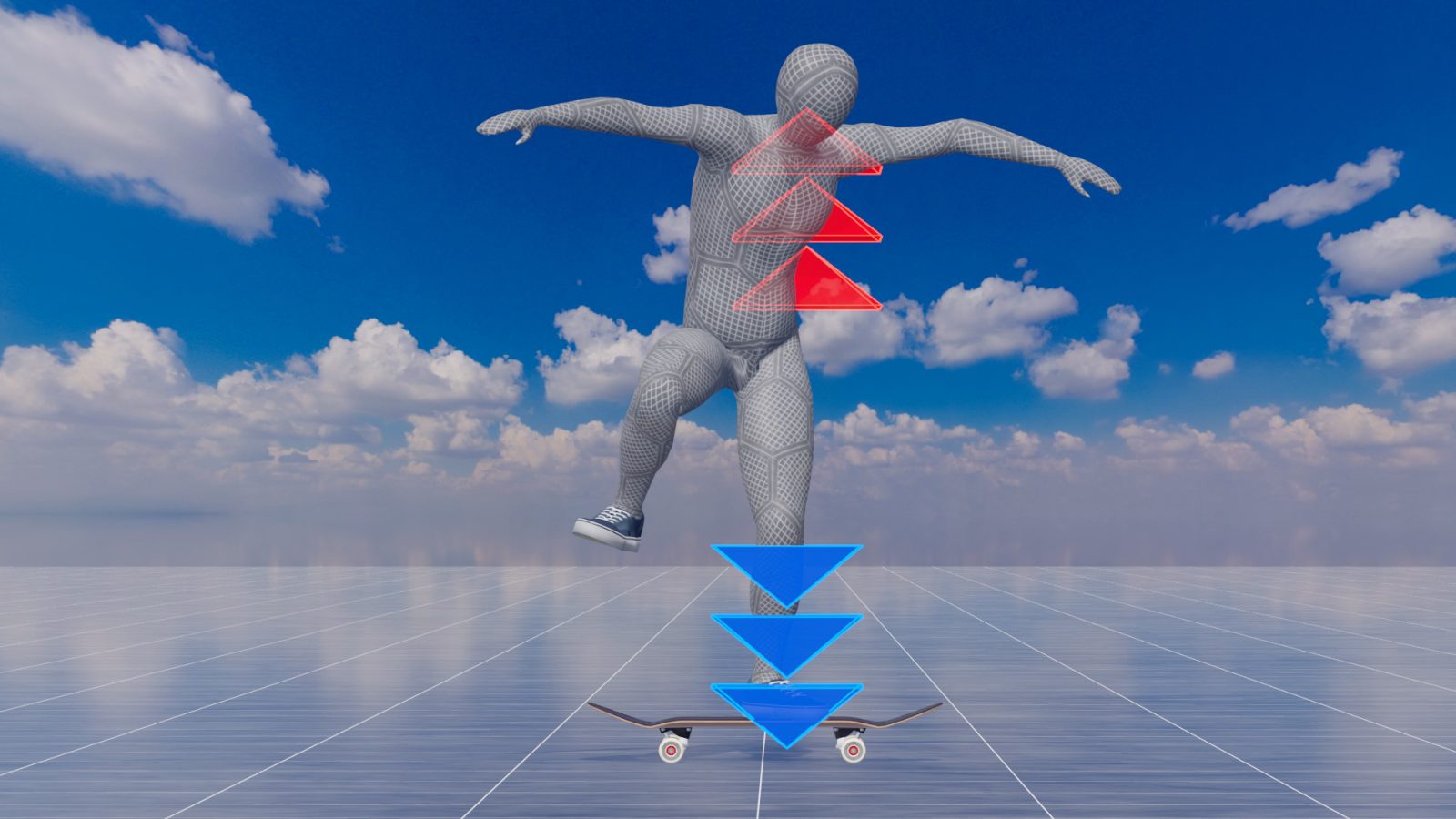
By shifting your weight onto your front foot, your body will now face slightly forward. In my case, my shoulders are facing almost completely forward, so I can put my weight on my front foot. But, if you wish, you should be able to close your shoulders more, and still put your weight on the front foot. Find the angle suitable for you.
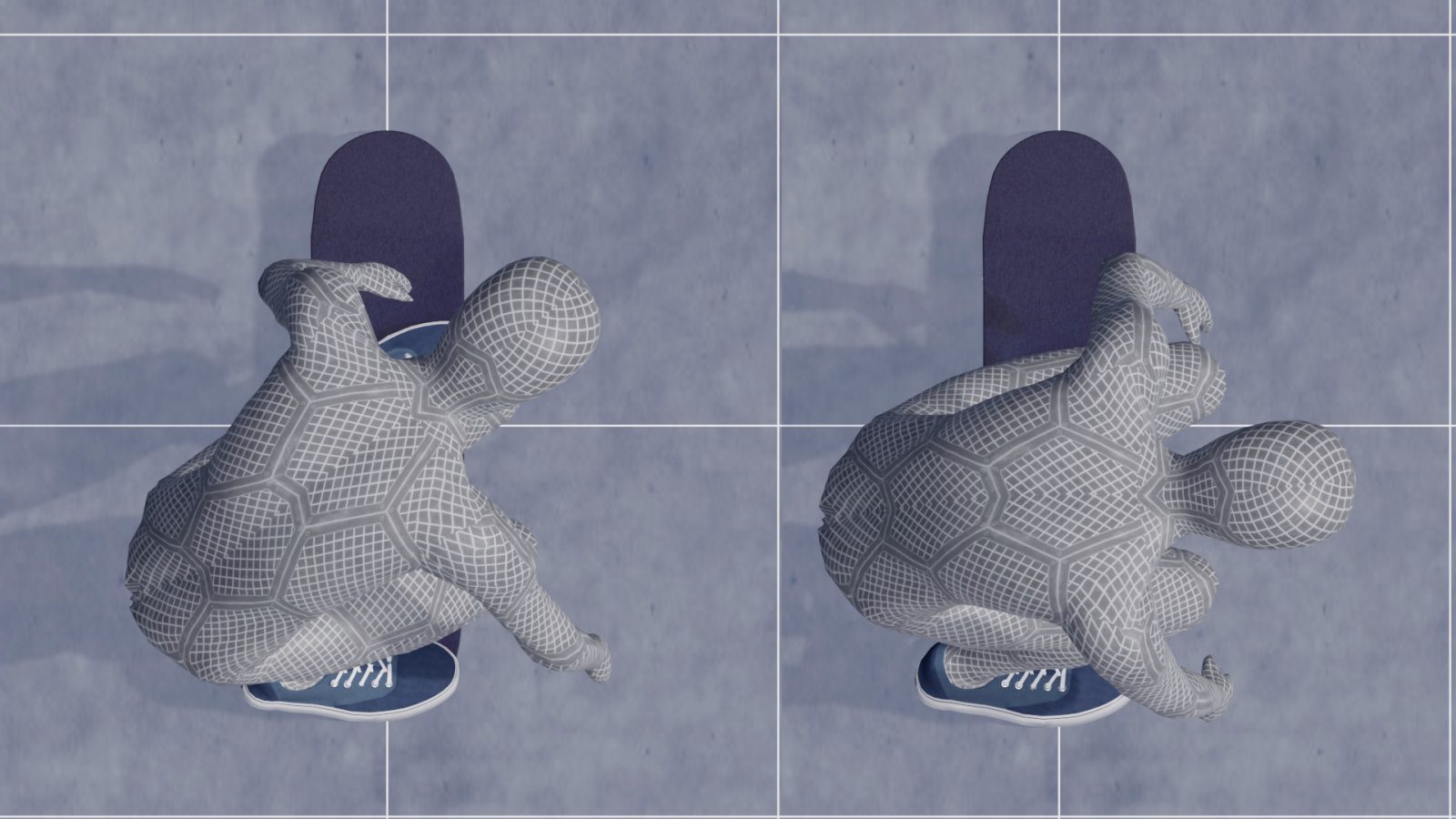
Of course, even in this posture, popping the tail too hard will still cause the front knee to rise too high, so you'll need to be careful. Also please note: most Kickflip issues come from raising the front knee too high, not from the idea of lifting your body with both legs. If you can manage that method, that's perfectly fine.

When You Pop Too Strongly
Before we move on to the flicking motion, there's an absolutely vital point that we need to keep in mind: You can't flick properly unless your pop is at the right strength. When you pop the tail, the board rises and pushes back against your front foot. However, if you pop too strongly, the board pushes back with excessive force, increasing friction between the board and the front foot. Too much friction makes the board stick to your front foot, making it hard to flick.
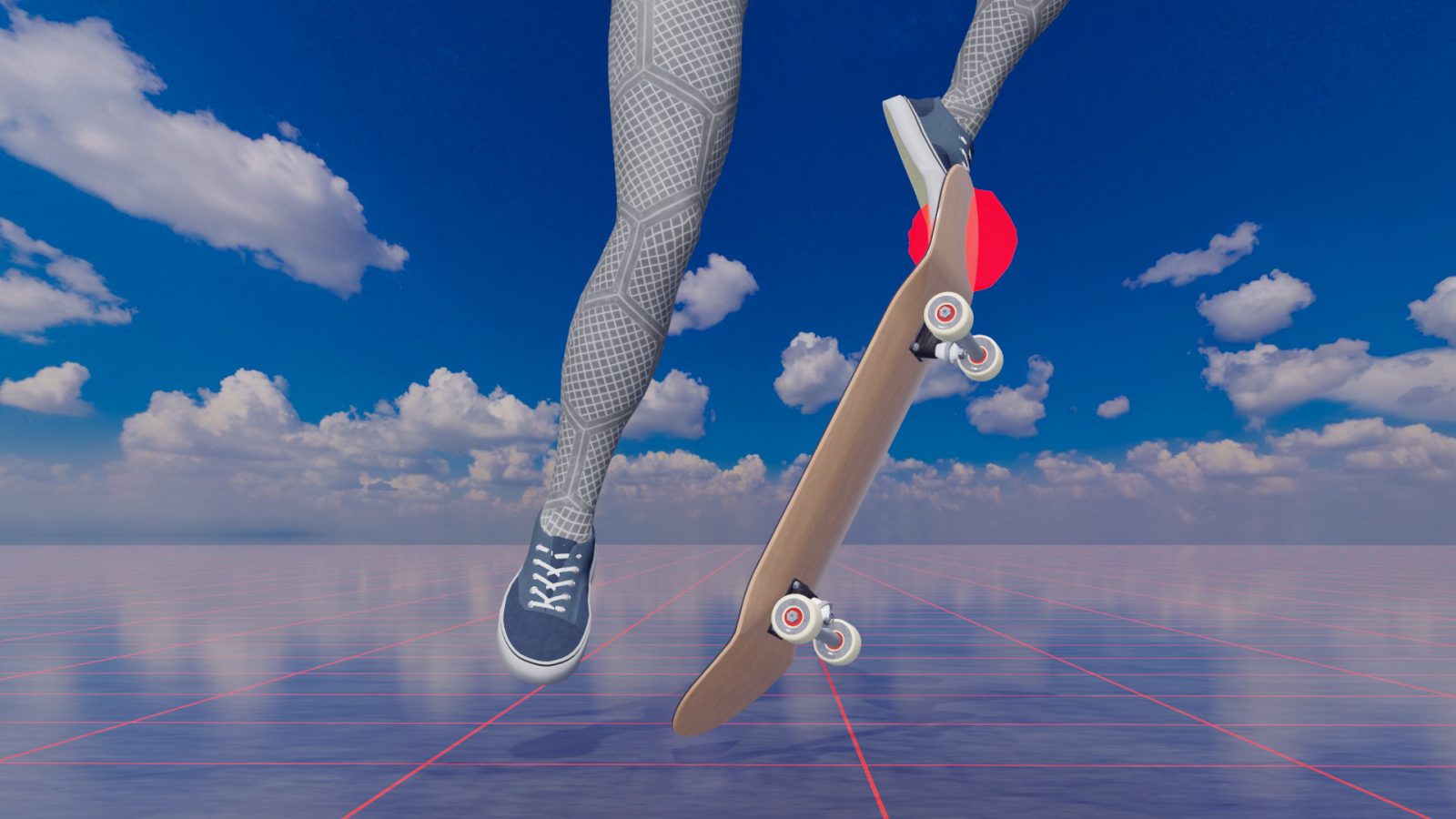
Also, just as when you raise your front knee too high, the board often rises above your front foot when you pop too hard — a condition I call the "Over-Pop." It should be easier to imagine if you simplify it. If the front foot was fixed in the air, and the board bumps into that point too strongly, it would go somewhere uncontrollably. The pop should be no stronger than what it takes to deliver the board to that spot.

To be clear, a strong pop itself is NOT a problem if it properly matches the height of your front foot. Meaning, if you can jump high and your front foot is high in the air, you have to pop just as hard as needed so that the nose reaches your front foot. The problem happens when you pop harder than needed for the height of your front foot.
How to Adjust the Strength of Your Pop
So, how do you actually control the strength of the pop? You could always say "just pop weaker," but in a motion like Skateboarding — which uses the entire body in coordination — that's not so simple. Have you heard of the term "Kinetic Chain?" It describes how multiple muscles work together in sequence during a movement. When you jump, for example, the energy starts in the thighs, passes through the calves, then reaches the ankles and toes.

So, during jumping or popping, the muscles transfer energy in sequence, and the ankles are under the influence of other muscles. If you jump or pop, because thighs and calves move, the ankles also try to move. Trying to weaken only the power of popping is like stopping a blast in the middle of an explosion. In other words, although it is doable, "Popping weaker" is not physically or physiologically natural.
If you want to reduce the strength of the pop intentionally, try placing your back foot closer to the base of the tail. I know it is against the common explanation that you should place your back foot on the tip of the tail. But, based on Physics, the board pops lower if you put your back foot closer to the beginning of the tail because of the lever principle. In this way, you can prevent the Over-Pop without changing how hard you pop.

Personally, I put my back foot on the toe-side of the tail. Because I use loose trucks, this setup helps my back foot act as a counterweight, keeping the board level. At the same time, when I pop, the board tilts slightly toward the toe side, increasing friction with the front foot and making the flick easier. Give it a try and see how it works for you.
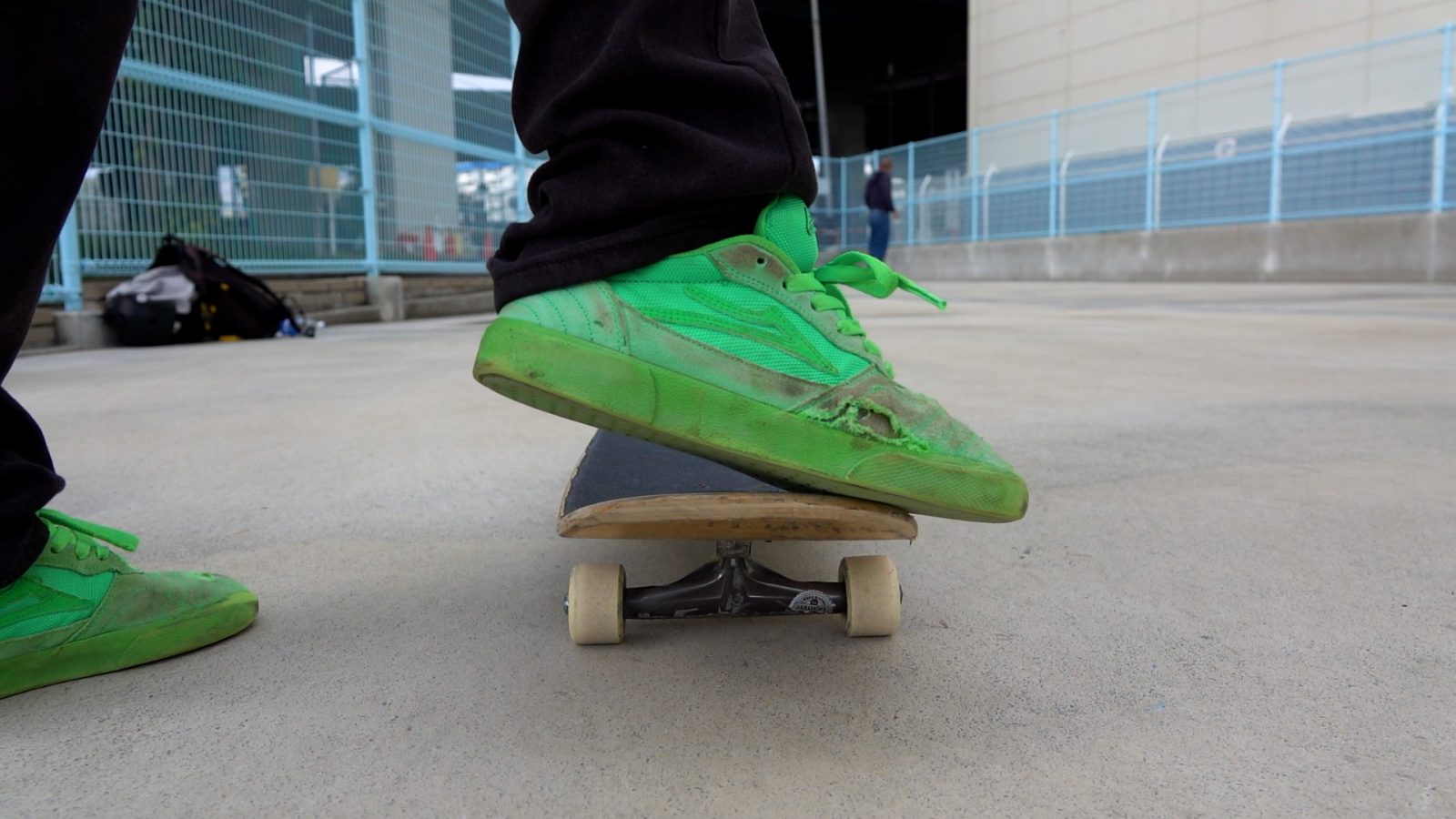
The Direction and the strength of flick
The most important point is to avoid flicking too hard. Let's think about an example of a crane. The ball starts moving from the highest point, reaches the bottom, and then goes up, but it is not thrusting itself upward, right? It's just inertia. When an object starts moving, it can't stop suddenly and keeps moving for a while.
Meaning, what matters in a flick is the initial downward part. Everything that happens afterward is just a byproduct. Don't even think about flicking too hard because you don't need to.
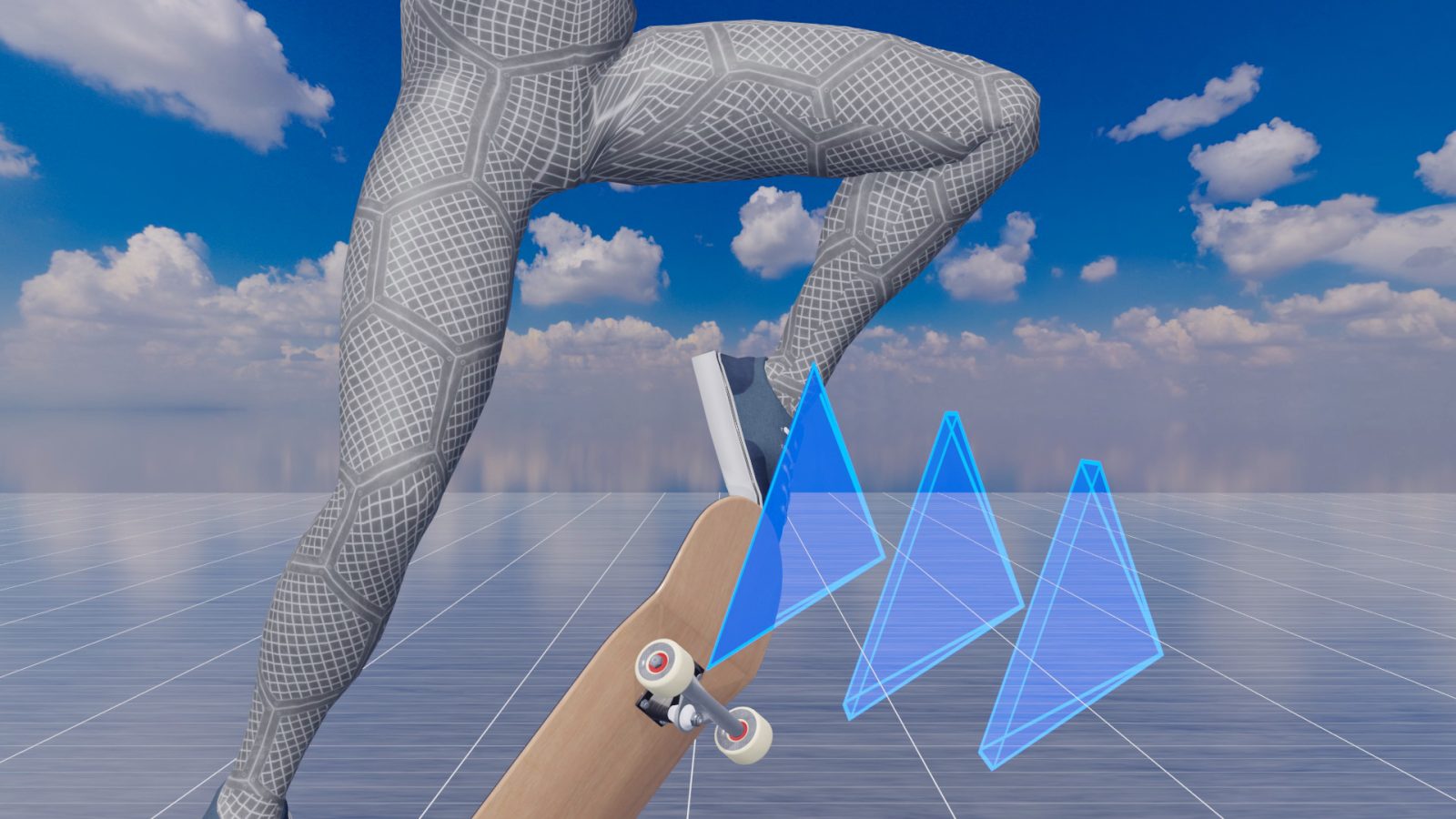
If you look at it from a first-person perspective, it should be more obvious. As you can see, even after the flick is complete, the front foot remains beneath the leg. Therefore, if you can see your front foot when you finish flicking and the board shoots out somewhere, that's a sign you are flicking too hard.

Common Misconceptions About Flick
Don't be afraid to flick downward. You must have heard that "you should flick upward," but you have to be very careful with this expression, because when the board is tilted, applying force parallel to it by flicking up can never, ever, generate rotation. A skateboard, like any other object, flips when you apply force perpendicular to its axis — which, in most cases, means diagonally downward.
Let me show you an extreme example. Imagine you're swinging your lower leg down against the phrase "flick upward." But if your body is going up, the actual path of your front foot becomes diagonally upward. Right? So, flicking down does not translate to "sending the front foot down to the ground." As long as your body is rising and your knee follows your body, it is perfectly fine to flick downward.
Again, flicking upward will NEVER flip the board; it is the downward force that flips it according to physics. In other words, the toe going up is a result of flicking down and your body going up, and it's different from flicking up intentionally. Don't mix these concepts. Of course, you can't kick downward, though.
How to Practice
First, shift your weight onto your front foot and use that leg to lift your body upward.
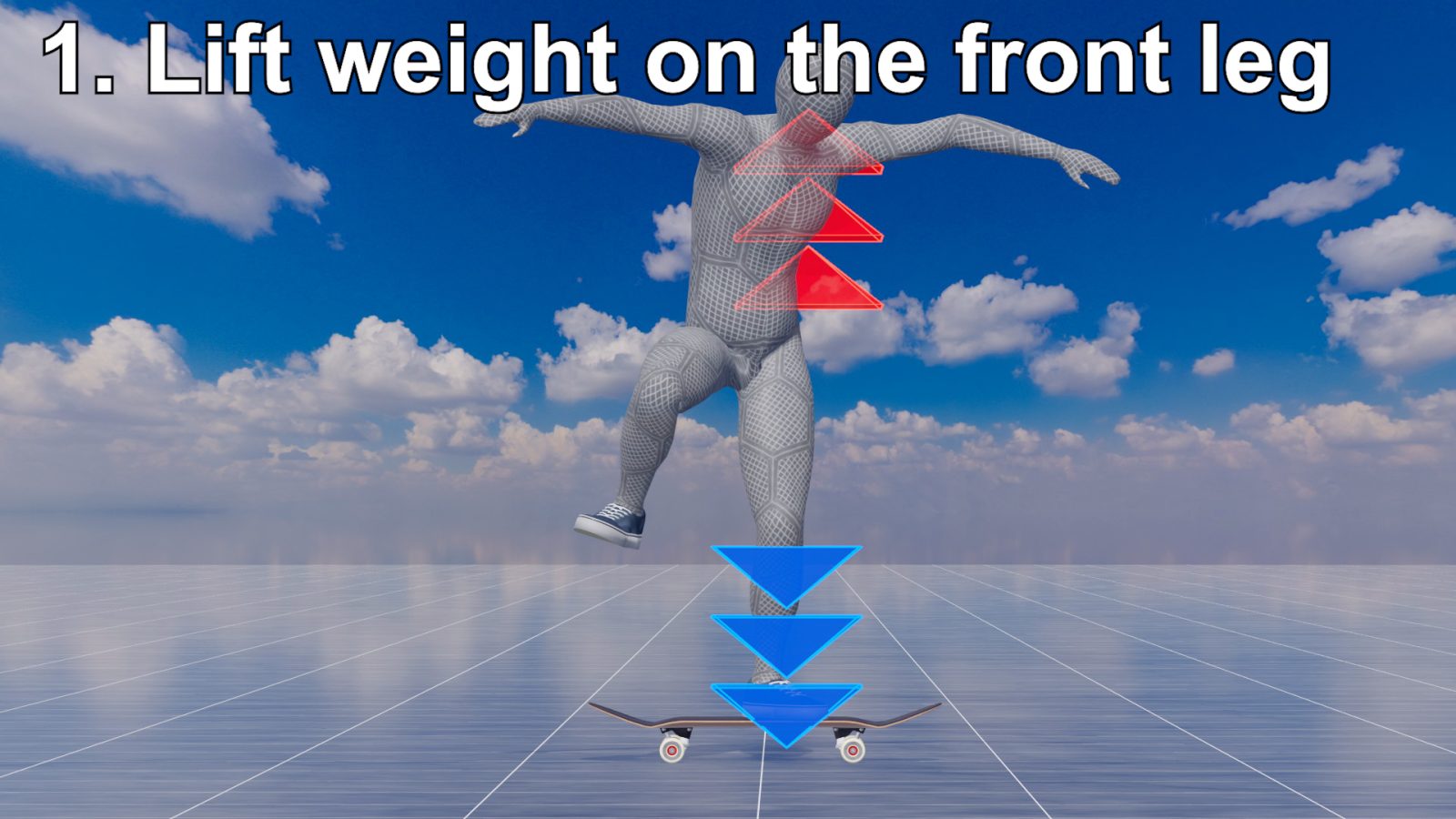
Next, raise your knee — but don't lift it too high. The only thing that matters is to find the height at which you can prevent the knee from pushing your chest back. You need to find the suitable height for your body structure yourself.

At the same time, pop the tail. The goal here is to find the right strength of the pop and placement of the back foot to minimize the energy you need to flip the board. Try different foot placement. We all have different body structures. So don't be obsessed with common sayings and try everything you can.

After popping, place your back foot on the ground right next to the board. This allows you to practice flicking safely without risk.
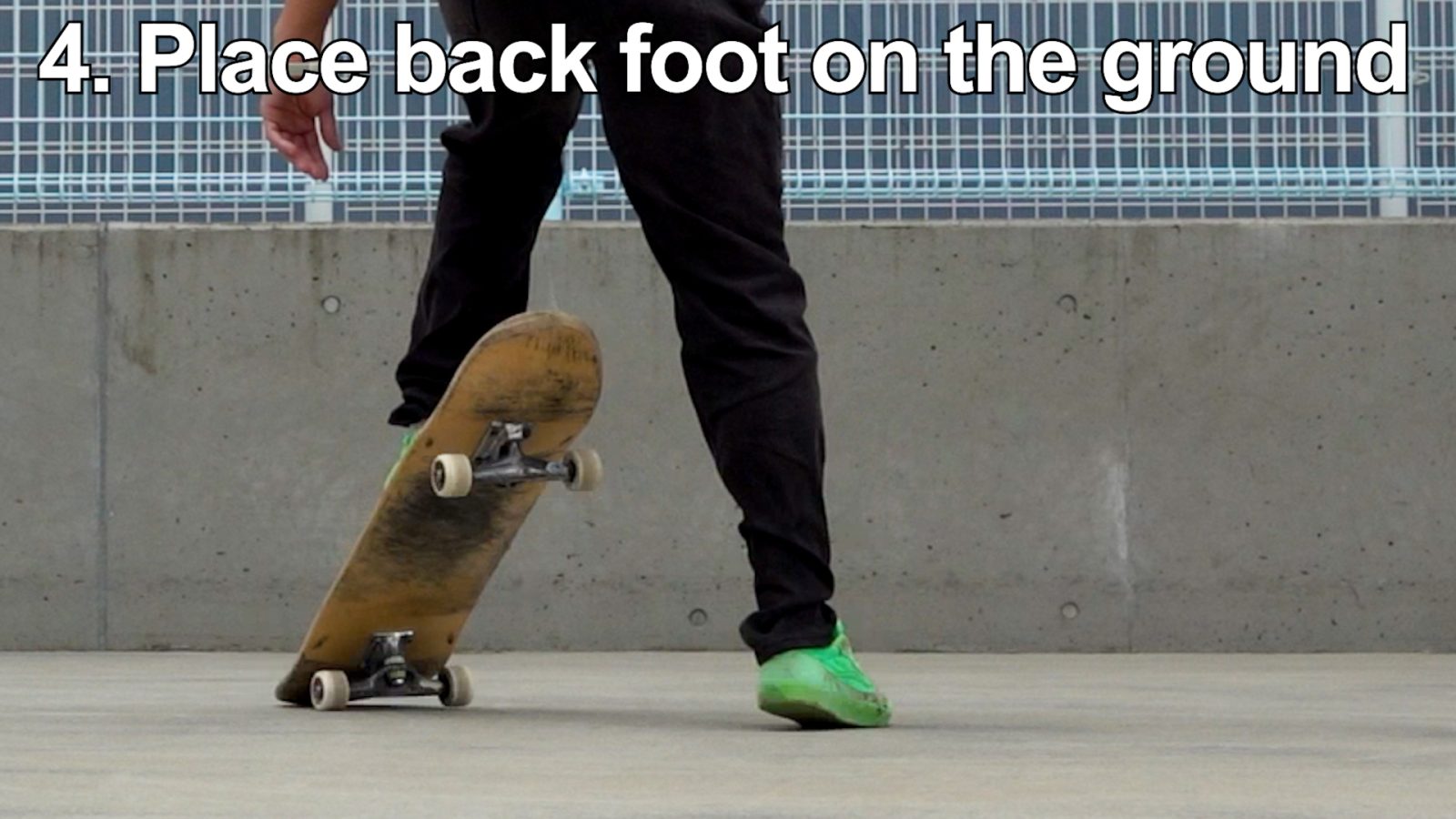
Then flick. Focus on flipping the board with the smallest possible motion. Your front foot should stop next to the board. Keep the motion compact and controlled.
